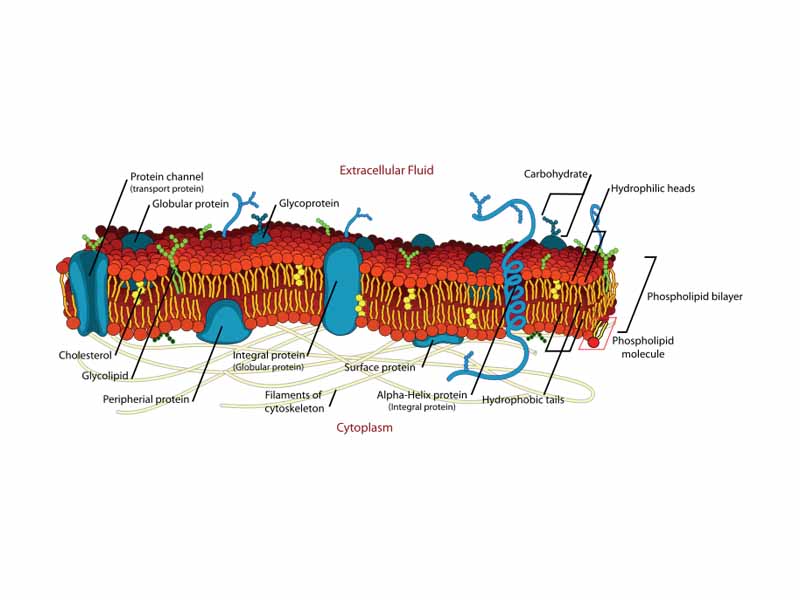Interdisciplinary Note (1 of 25)
Phospholipids, the major class of membrane lipids have both a hydrophilic and a hydrophobic moeity. Phospholipids spontaneously form lipid bilayers in aqueous media. Along with phospholipids, proteins are a major component of biological membranes. The proteins and lipids of membrane assemblies are held together mainly by intermolecular forces. While lipids constitute a permeability barrier, proteins mediate membrane functions. The more saturated the fatty acid chains of the fatty acids, the less flexible and fluid the membrane. The fluid mosaic model conceptualizes a biological membrane as a two dimensional solution. The lipid bilayer is the solvent for integral membrane proteins. Unless specially restricted, lateral diffusion of membrane proteins is permitted whereas rotation from one side of the membrane to the other is not. Proteins are either extrinsic or intrinsic.
